Graham Reid | | 3 min read
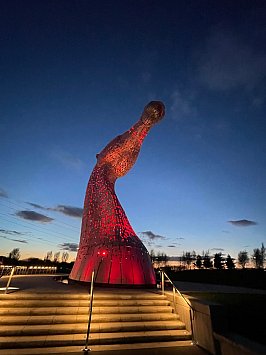
And for sure there was a CCC (close Covid contact) crowd laughing and drinking in the Wheatsheaf Inn up an alley off the main street.
But step outside that joyful old pub, which was opened at the end of the 1790s, and there was nothing happening on the main street on a Saturday evening.
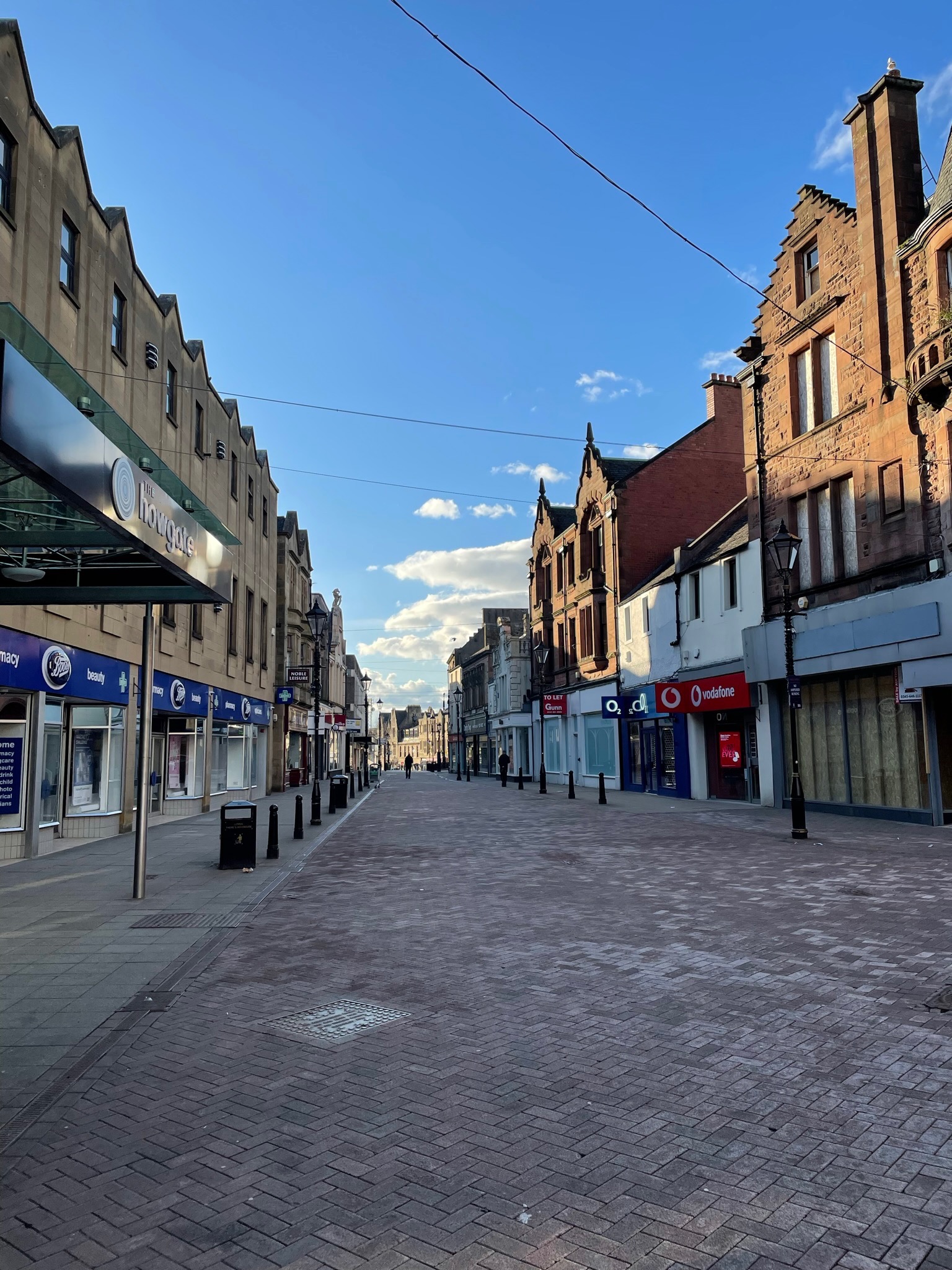 By nothing I mean no one about, the place as silent as the churchyard and many of the shops were boarded up or had those dreadful portents of doom, the “For Lease” sign.
By nothing I mean no one about, the place as silent as the churchyard and many of the shops were boarded up or had those dreadful portents of doom, the “For Lease” sign.
It wasn't always like this of course, why even Bonnie Prince Charlie marched through here with his ragtag followers, retreating back up Scotland to their final ignominy at Culloden near Inverness.
Earlier in the evening we'd seen a bright orange bride and her equally fake-tanned friends totter on heels out of a bar and into a car, and after the Wheatsheaf's convivial atmosphere we managed to find a decent place to eat – one which wasn't a sports bar – and there were some kids kicking a football around near the bus stop when we walked around waiting for dark.
And dark is what you need to appreciate one of Falkirk's truly magnificent sights: the Kelpies.
Kelpies were shapeshifting, mythological creatures which often took the form of horses (or temptress women). And water horses were those powerful animals which pulled the boats along the canals – the upper Union Canal and lower Forth and Clyde Canal – which were the traditional arteries in Falkirk and, when linked together, provided passage from Glasgow to Edinburgh.
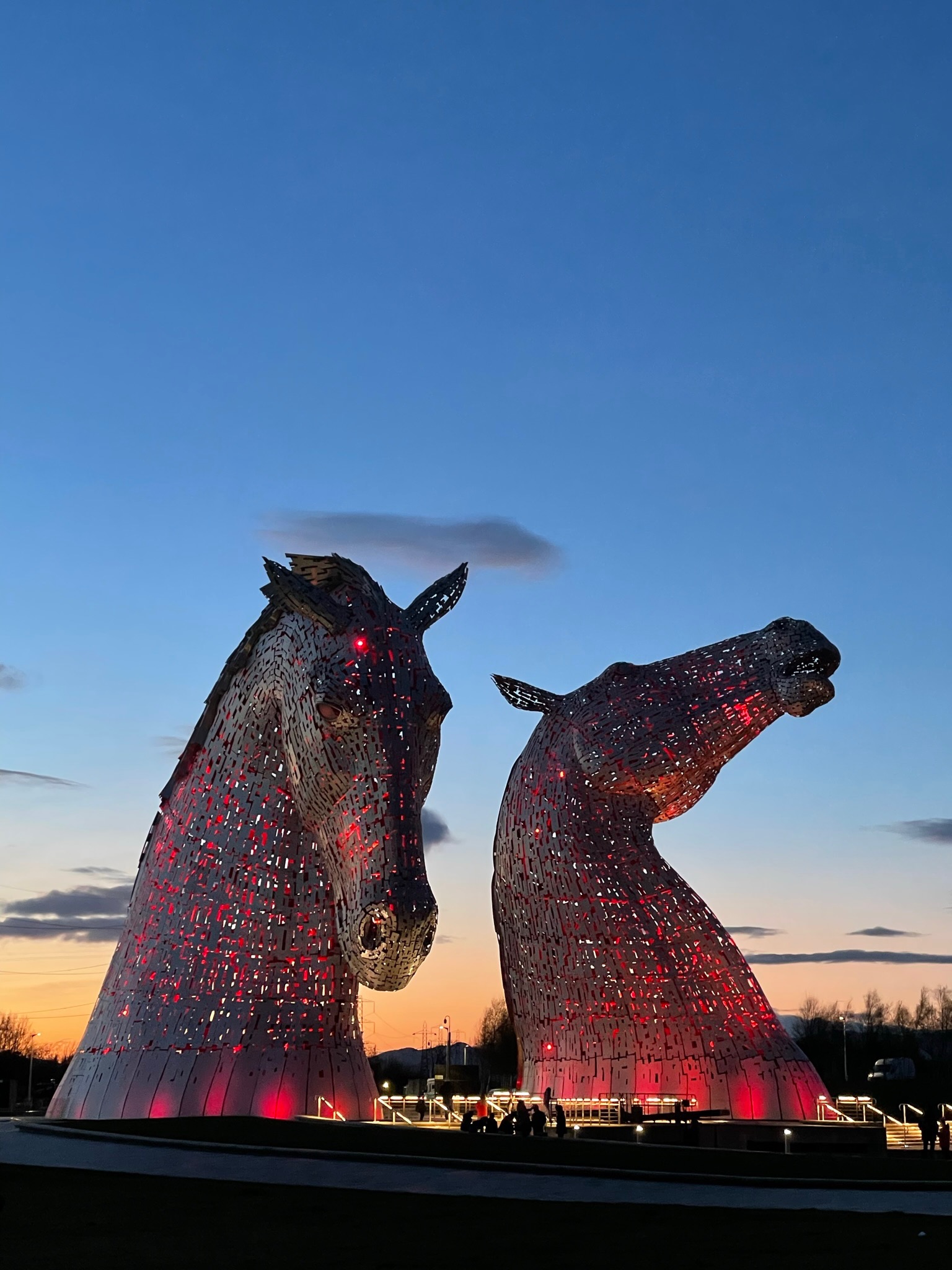 Falkirk sat around the midpoint of this trade and commerce route. Although the waterways being around 25 metres apart in the landscape meant that a wonderful piece of 21stcentury engineering was required to lift vessels up and down between them.
Falkirk sat around the midpoint of this trade and commerce route. Although the waterways being around 25 metres apart in the landscape meant that a wonderful piece of 21stcentury engineering was required to lift vessels up and down between them.
More of the aesthetically beautiful Falkirk Wheel in a moment.
Meanwhile . . . the Kelpies.
As a tribute to these powerful and important Celtic water horses, in the 350 hectare Helix Urban Park designed for walking and cycling, stand two magnificent horse-head sculptures 30 metres high.
Made of steel plates and illuminated at night, these proud and handsome creatures rear out the park and the lagoon, the colourful lights changing and reflecting in the canal which runs between them.
Designed by Andy Scot, these sculptures dominate the landscape and pull visitors in the evening who – like us – are in awe of their size and beauty.
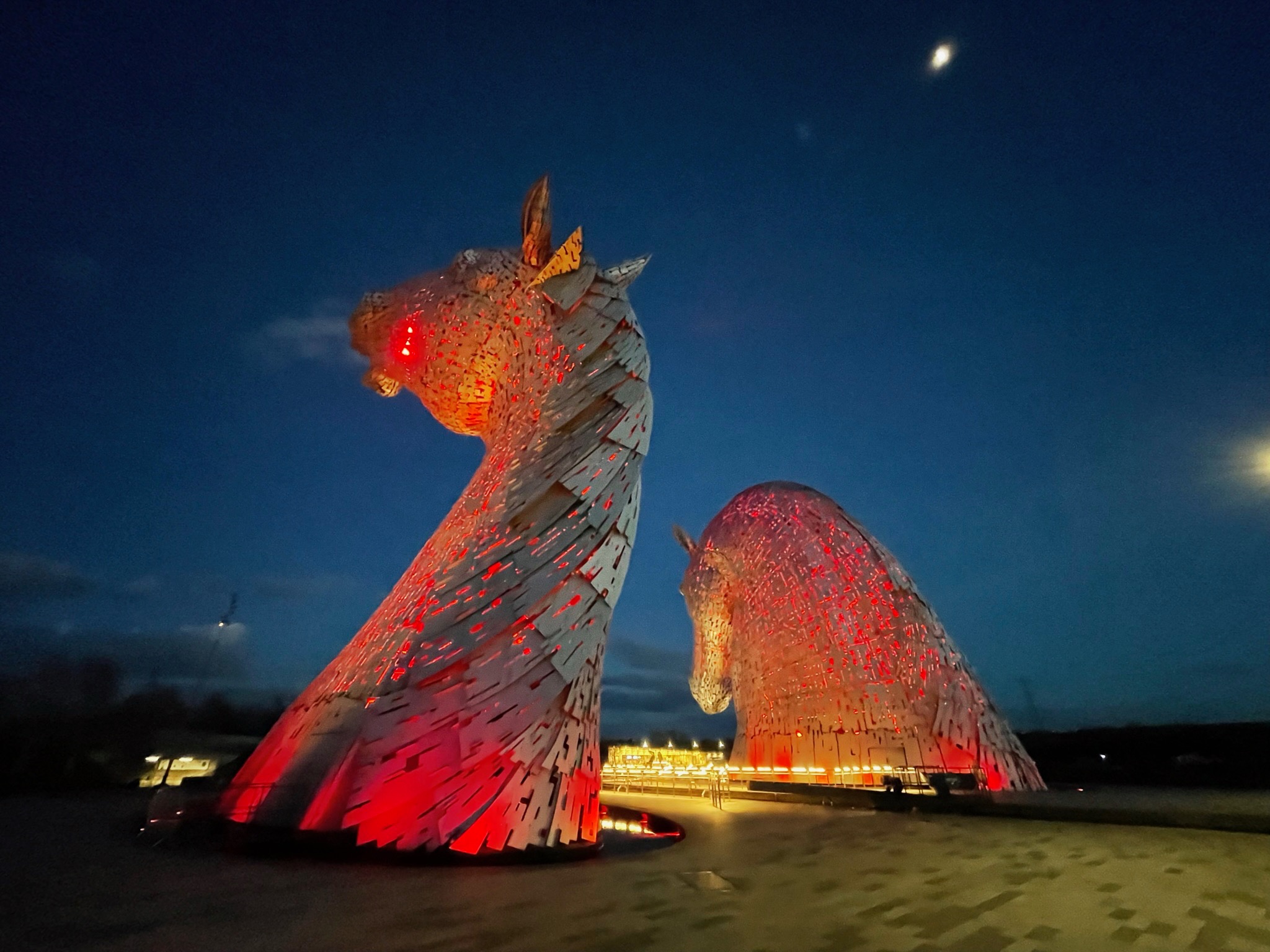 Maybe this is why the town centre was deserted? There were dozens of families walking around on the cold clear night watching the lights change on these robust kelpies.
Maybe this is why the town centre was deserted? There were dozens of families walking around on the cold clear night watching the lights change on these robust kelpies.
If the Kelpies are one landmark in Falkirk, the other is the extraordinary Falkirk Wheel, a 35 metre high rotating boatlift which can carry two canal boats and, through a circular movement, take them up to the canal above . . . or down to the one below.
Not only is the Wheel a remarkable piece of engineering and rather beautiful to look at, it only uses the same power as half a dozen kettles.
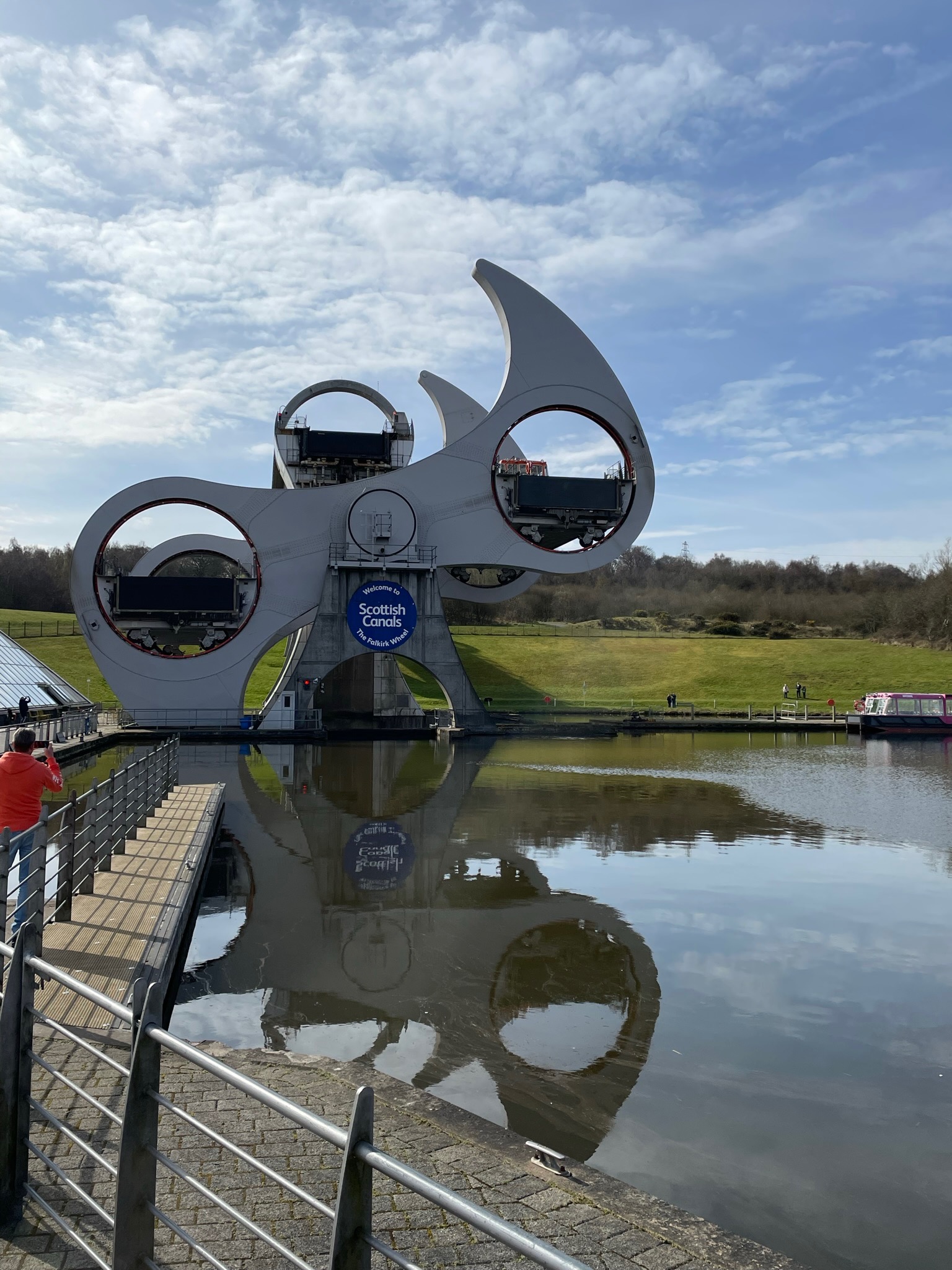 It is an almost imperceptibly slow ride between the levels of the canal as the cogs silently turn, enough time for passengers on the tourism boat to be told the story behind the Wheel, the three years (a mere three?) it took to construct it and how the simple idea of water displacement is at the heart of its economic functioning.
It is an almost imperceptibly slow ride between the levels of the canal as the cogs silently turn, enough time for passengers on the tourism boat to be told the story behind the Wheel, the three years (a mere three?) it took to construct it and how the simple idea of water displacement is at the heart of its economic functioning.
Motorways in the Sixties spelt the end of the through navigation canal route but in the Nineties a conglomerate of Scottish Enterprise, EU agencies and local councils banded together and the innovative Falkirk Wheel (by Dundee-based Nicoll Russell design studios) opened in 2002.
Today the banks of the canals have thriving wildlife, parks and walkways, and they draw 20 million visitors annually.
With such iconic structures as the Kelpies and the Wheel, the town of Falkirk – population about 36,000 – has undergone something of renaissance.
If those ghosts of Pompeii could rise up and transport themselves to Falkirk they would recognise that dead centre.
But they, like us – who have witness hundred of wondrous centuries more – would stand in awe before the science and art of the Kelpies and the Falkirk Wheel.
.
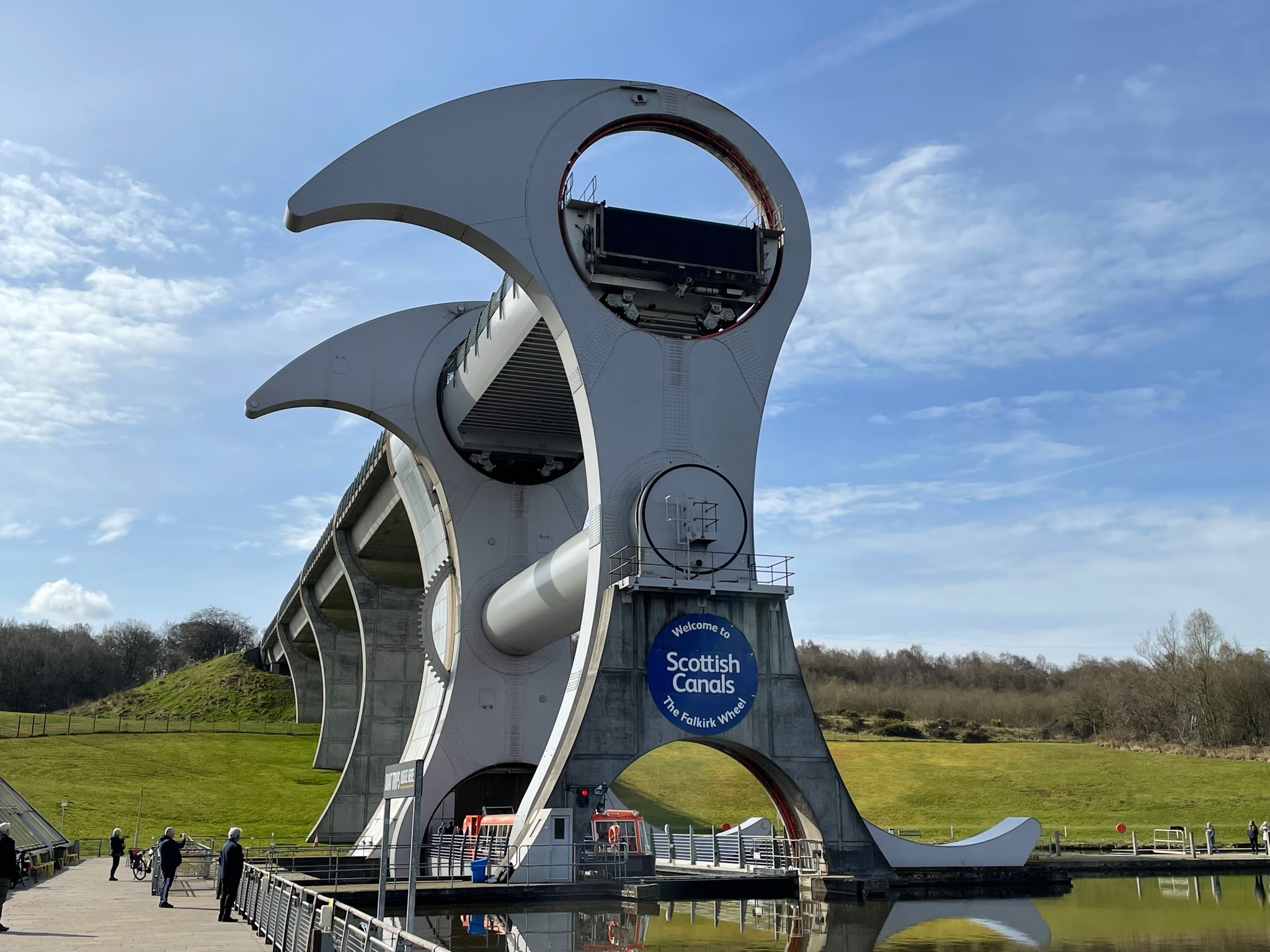
.
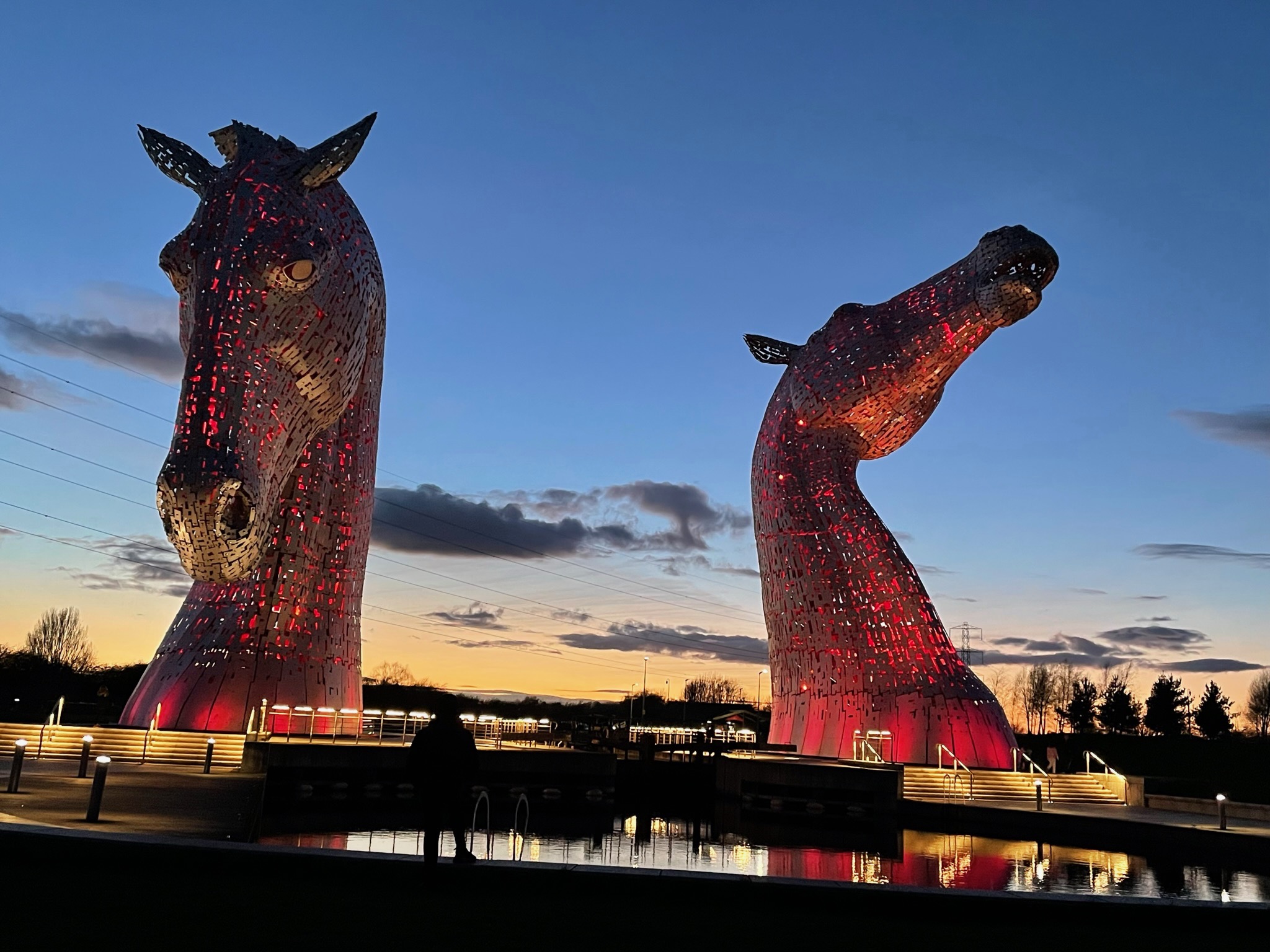
.
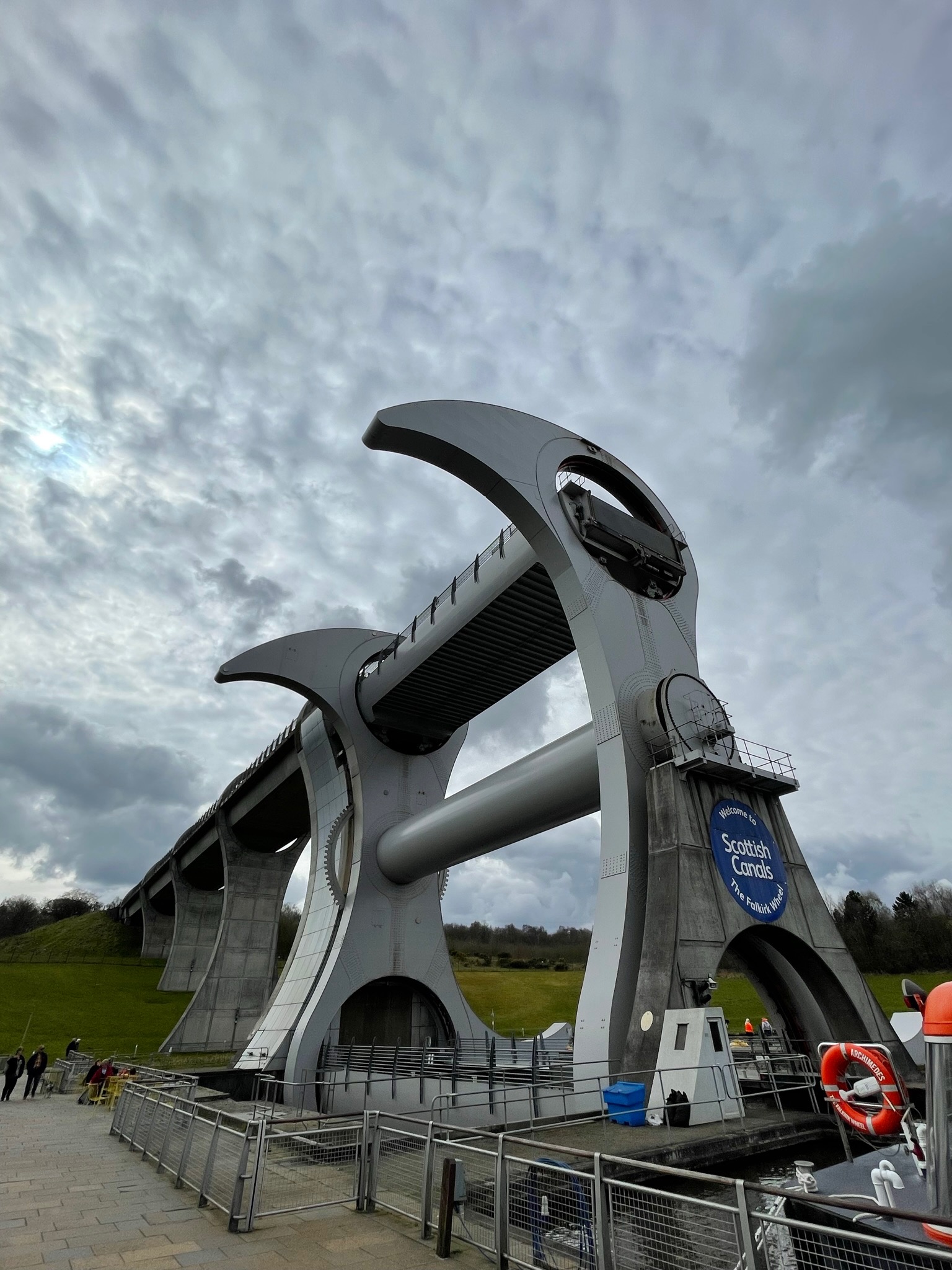

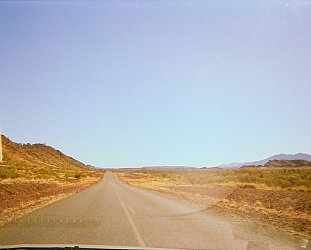
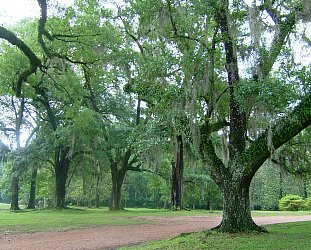


Alan Jackson - Jun 7, 2022
Hi Graham. I found Elsewhere via its music content but I have to say I'm particularly enjoying the travel pieces of late. I love Scotland and last week's description of the otherwise-deserted hotel in Callendar plus this description of Falkirk on a Saturday night have been hugely enjoyable. I hope there's more Scotland to come. Thanks and all best.
Savepost a comment